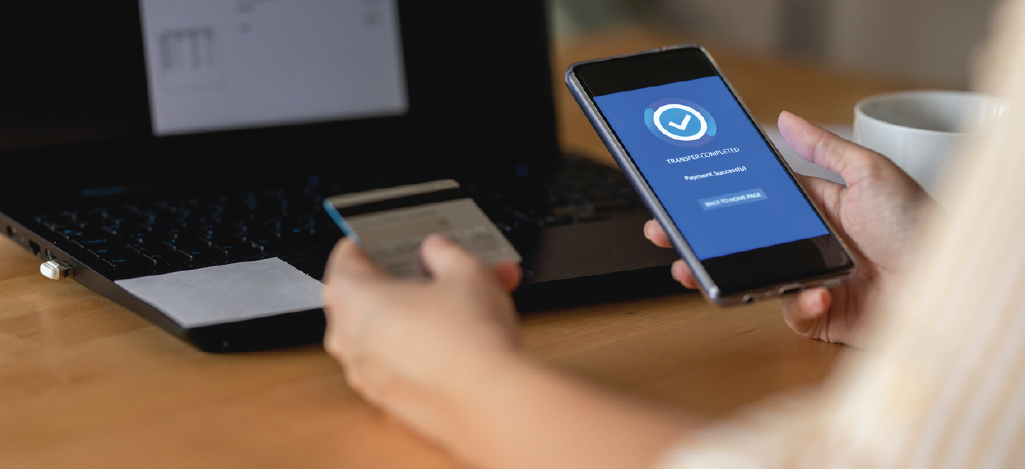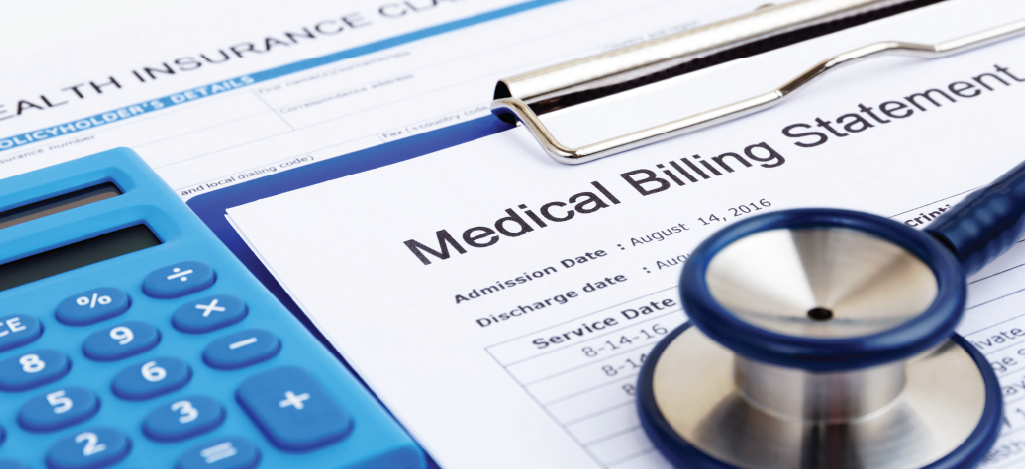Discover the best practices for maintaining payment security in a medical practice and ensuring data protection.
In today's digital age, data protection has become a top priority for businesses across all industries. In the healthcare sector, where sensitive patient information is constantly being exchanged, maintaining payment security is crucial. Ensuring the confidentiality and integrity of payment data not only protects patients' financial well-being but also builds trust and credibility in the medical practice.
Understanding the Importance of Payment Security in Healthcare

Effective payment security goes beyond mere compliance with regulations. It plays a vital role in establishing patient trust. When individuals seek medical assistance, they put their health and financial information in the hands of healthcare providers. Protecting this data is essential for maintaining patient confidentiality and safeguarding their privacy.
Data breaches can have severe financial and legal implications for medical practices. In addition to the financial loss associated with a breach, healthcare providers may face legal consequences and damage to their reputation. Staying vigilant about payment security is a proactive measure to prevent these risks.
One of the key reasons why payment security is crucial in healthcare is the sensitive nature of the information involved. Healthcare providers handle a vast amount of personal data, including patients' names, addresses, social security numbers, and medical histories. This information is highly valuable to cybercriminals who seek to exploit it for financial gain or commit identity theft.
Additionally, healthcare providers may face legal repercussions if they fail to adequately protect patient payment information. Data breach laws and regulations, such as the Health Insurance Portability and Accountability Act (HIPAA) in the United States, require healthcare organizations to implement security measures to safeguard patient data. Failure to comply with these regulations can result in hefty fines and legal penalties.
The reputational damage caused by a data breach can be long-lasting and difficult to recover from. News of a breach can spread quickly, tarnishing the image of the affected healthcare provider. Patients may question the organization's commitment to their privacy and security, leading to a loss of trust and a decline in patient retention.
Identifying Potential Threats to Payment Security
Understanding the various threats that medical practices face is the first step towards effectively protecting payment information. Common types of payment fraud in healthcare include identity theft, insurance fraud, and fraudulent billing schemes. It is essential to be aware of these risks and implement appropriate security measures.
Identity Theft
Identity theft is a significant concern in the healthcare industry. Cybercriminals target medical practices to gain access to sensitive patient information, such as social security numbers and credit card details. Once obtained, this information can be used to commit fraud, resulting in financial loss for both the patients and the healthcare providers.
Insurance Fraud
Insurance fraud is another prevalent threat to payment security. Dishonest individuals may attempt to exploit the healthcare system by submitting false claims or exaggerating the cost of services rendered. This type of fraud not only leads to financial losses but also undermines the integrity of the healthcare system as a whole.
Fraudulent Billing
Fraudulent billing schemes are yet another challenge faced by medical practices. Unscrupulous individuals may attempt to manipulate billing codes or submit claims for services that were never provided. These fraudulent activities can result in financial losses for both the healthcare providers and the insurance companies.
Technology
Technological advancements have made payment processing more efficient, but they have also brought about new challenges in terms of security. Practices must adapt to these changes and keep abreast of emerging threats to payment security.
One emerging threat in payment security is the increasing use of mobile payment platforms. While convenient, these platforms are susceptible to hacking and unauthorized access. Medical practices must ensure that their mobile payment systems are properly secured and regularly updated to protect against potential breaches.
Another challenge is the rise of ransomware attacks. Cybercriminals use malicious software to encrypt a practice's payment data, demanding a ransom in exchange for its release. These attacks can disrupt operations and cause significant financial harm if not addressed promptly.
Additionally, the growing popularity of telehealth services introduces new vulnerabilities to payment security. As more medical consultations and transactions occur online, it becomes crucial to safeguard patient payment information during virtual visits. Practices must implement robust encryption measures and secure communication channels to mitigate the risk of data breaches.
Furthermore, the use of cloud-based storage and electronic health records (EHRs) poses unique challenges to payment security. While these technologies offer numerous benefits, they also create potential points of vulnerability. Medical practices must ensure that their cloud storage providers and EHR systems have robust security measures in place to protect sensitive payment information.
In conclusion, protecting payment information in the healthcare industry requires a comprehensive understanding of the potential threats. By staying informed about emerging risks and implementing appropriate security measures, medical practices can safeguard their patients' financial data and maintain the integrity of the payment system.
Implementing Robust Data Protection Measures

An integral part of maintaining payment security in a medical practice is implementing a secure payment processing system. This system should incorporate multiple layers of security, such as secure socket layer (SSL) certificates, firewalls, and intrusion detection systems.
Encryption is a fundamental aspect of data protection. By encrypting payment information, medical practices can ensure that sensitive data remains unreadable to unauthorized individuals. Strong encryption protocols, such as Transport Layer Security (TLS), should be used to protect data both in transit and at rest.
Secure Socket Layer (SSL)
One of the key components of a secure payment processing system is the use of secure socket layer (SSL) certificates. SSL certificates establish an encrypted connection between a website and a user's browser, ensuring that any data exchanged between the two remains secure. These certificates are issued by trusted certificate authorities and are an essential part of safeguarding sensitive payment information.
In addition to SSL certificates, firewalls play a crucial role in protecting payment data. Firewalls act as a barrier between a medical practice's internal network and the external internet, monitoring and filtering incoming and outgoing network traffic. They help prevent unauthorized access to sensitive data by blocking potentially malicious connections and filtering out suspicious activity.
Intrusion Detection Systems (IDS)
Another important security measure is the implementation of intrusion detection systems (IDS). IDSs monitor network traffic for any signs of unauthorized access or malicious activity. They analyze network packets and compare them against known attack patterns, alerting system administrators if any suspicious behavior is detected. By promptly identifying and responding to potential security breaches, IDSs help ensure the integrity of payment data.
Transport Layer Security (TLS)
When it comes to data protection, encryption is a critical aspect. Encrypting payment information ensures that even if unauthorized individuals gain access to the data, they won't be able to read or make use of it. Strong encryption protocols, such as Transport Layer Security (TLS), should be employed to protect data both in transit and at rest.
TLS is a cryptographic protocol that provides secure communication over a network. It establishes an encrypted connection between a client and a server, ensuring that any data transmitted between the two parties remains confidential and tamper-proof. TLS utilizes a combination of symmetric and asymmetric encryption algorithms to secure the data, making it extremely difficult for attackers to intercept or modify the information.
When implementing TLS, it is important to use the latest version of the protocol and keep it up to date. This ensures that any vulnerabilities or weaknesses discovered in older versions are addressed, providing the highest level of security for payment data. Additionally, strong encryption algorithms and key lengths should be used to further enhance the security of the encrypted data.
The Importance of Data Protection
Protecting payment data is not only crucial during transit but also when it is at rest. This means that even when the data is stored on servers or other storage devices, it should be encrypted to prevent unauthorized access. Medical practices should implement robust encryption mechanisms for their databases and other storage systems, ensuring that payment data remains secure even if the physical storage media is compromised.
In conclusion, implementing robust data protection measures is essential for maintaining payment security in a medical practice. By incorporating multiple layers of security, such as SSL certificates, firewalls, and intrusion detection systems, medical practices can significantly reduce the risk of unauthorized access to sensitive payment information. Encryption, both in transit and at rest, is a fundamental aspect of data protection and should be implemented using strong protocols like TLS. By following these best practices, medical practices can ensure the confidentiality and integrity of payment data, safeguarding both their patients and their reputation.
Training Staff on Payment Security Protocols
Ensuring payment security within a medical practice requires the active involvement of staff members. It is essential to provide comprehensive training on payment security guidelines to all employees involved in payment processing.
Medical staff should be made aware of essential payment security guidelines, such as not sharing passwords, securely storing patient information, and immediately reporting any suspicious activity. Regular training sessions should be conducted to reinforce these protocols and keep staff members updated on the latest data protection practices.
Regularly Auditing and Updating Security Measures

Maintaining payment security is an ongoing process that requires regular audits and updates to security measures. Regular audits help identify vulnerabilities and ensure that the implemented security protocols are effectively protecting payment data.
Staying up to date with evolving payment security standards is crucial to maintain data protection. Payment security standards, such as the Payment Card Industry Data Security Standard (PCI DSS), are constantly updated to address emerging threats. Medical practices must stay informed about these changes and implement the necessary upgrades to their security systems.
By following these best practices, medical practices can significantly enhance payment security and protect patient data. Implementing robust security measures, training staff, and staying updated with industry standards are essential steps towards ensuring data protection in medical practices. Prioritizing payment security not only safeguards patient trust but also mitigates financial and legal risks associated with data breaches.
Going Forward with BillFlash
With BillFlash, practices can go further by optimizing their revenue cycle, efficiently collecting past-due A/R, and providing patients with a convenient and secure payment experience. With a user-friendly interface and industry experts available for all your billing, payments, and collections needs, BillFlash is the perfect solution for small practices.

